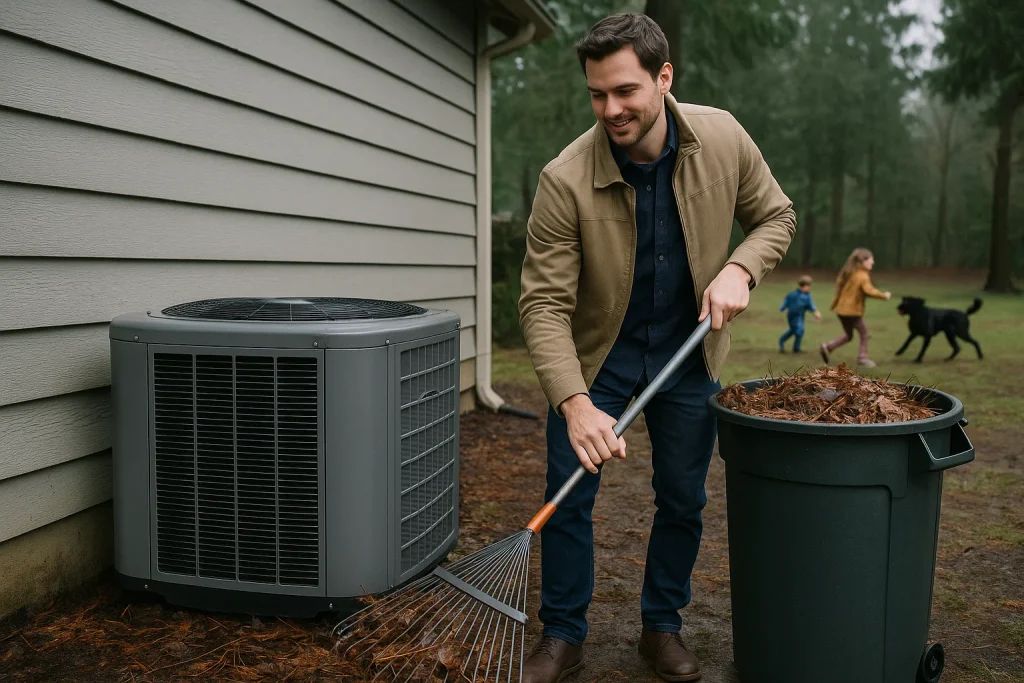As the cool, damp air of the Pacific Northwest settles into the Bellingham area, homeowners begin to rely more heavily on their heating systems. Heat pumps are an efficient and eco-friendly way to keep homes comfortable year-round, but they require a bit of preparation before the colder months arrive. By taking a few preventative steps, you can ensure your system runs smoothly, efficiently, and reliably all winter long.

1. Inspect and Clean Outdoor Units
The Pacific Northwest is known for its abundant rainfall, falling leaves, and occasional winter storms. Before winter sets in, check the outdoor heat pump unit. Remove leaves, dirt, pine needles, and any other debris that may have accumulated around the housing. Trim back vegetation at least two feet on all sides to allow for proper airflow. A clean and unobstructed unit not only improves efficiency but also helps prevent unnecessary strain on the system.
2. Replace or Clean Filters
Air filters are the first line of defense against dust, pollen, and mold spores—common concerns in this damp region. Dirty filters restrict airflow and force your heat pump to work harder. Homeowners should inspect filters monthly and replace or clean them every one to three months, depending on usage and indoor air quality. Keeping filters clean ensures optimal performance and helps maintain healthy indoor air during the months when homes are closed up tight.
3. Check Thermostat Settings
With fluctuating fall temperatures, many Bellingham homeowners forget to adjust thermostat settings until the first cold snap. Before winter arrives, test your thermostat to make sure it’s working properly and programmed for cooler conditions. Consider upgrading to a smart thermostat, which can help you balance comfort and efficiency by adapting to your household’s daily schedule.
4. Schedule Professional Maintenance
Even if your heat pump seems to be running fine, it’s wise to schedule a professional tune-up before winter. A technician will check refrigerant levels, test electrical connections, lubricate moving parts, and ensure the system is running at peak performance. This proactive step can prevent mid-winter breakdowns when repair schedules are busiest.
5. Protect Against Ice and Snow
While the Pacific Northwest doesn’t see heavy snowfall everywhere, ice storms and occasional snow are possible. If freezing rain or snow is in the forecast, make sure your heat pump is clear of ice buildup. Avoid covering the unit completely, as it still needs airflow, but you can install a protective awning or use a slanted cover to help deflect precipitation. Never chip away ice with sharp tools—if ice accumulation becomes an issue, call a technician.
6. Optimize Home Insulation
Lastly, even the most efficient heat pump works harder in a drafty home. Seal windows and doors, add weather stripping, and check attic insulation. Improving insulation reduces heat loss and helps your system maintain consistent comfort without running constantly.
Preparing your heat pump for winter in the Pacific Northwest is about prevention and efficiency. By cleaning, inspecting, and maintaining your system before temperatures drop, you can enjoy steady, reliable warmth throughout the season. A little effort now can save you money, prevent emergency repairs, and ensure your home stays cozy even when the winter rains—and occasional snow—set in.
Our team of Home Performance Experts has served the I-5 corridor from Blaine to Marysville, Oak Harbor to Concrete, and the San Juan Islands since 1972 with a mission of Improving Lives™. We look forward to serving you too! Contact Barron Heating today for heat pump maintenance.
